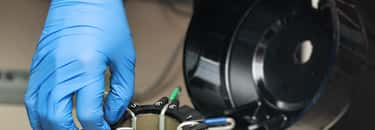Sperm Freezing (Sperm Cryopreservation) vs Testicular Tissue Cryopreservation

What is Sperm Freezing?
Sperm Freezing, also known as Cryopreservation or Sperm Banking, is the process of collecting, freezing, and storing a man’s sperm for possible use in a Fertility Treatment cycle(s) later on, when healthy viable sperm may be harder to collect.
Sperm Freezing preserves the option to become a biological father, regardless of age, illness, injury, medical Treatment, or lifestyle. It involves fertility assessment, Sperm Collection or Sperm Retrieval, Cryopreservation of one or more sperm samples, and storing the frozen sperm straws in liquid nitrogen tanks.
Who is it for?
- Single men wishing to preserve their Fertility or/and having male factor infertility.
- Heterosexual couples undergoing Fertility Treatment or having male factor infertility.
- Gay couples interested in Fertility Preservation or undergoing Fertility Treatment.
- Single men, heterosexual couples, and gay couples having an upcoming Treatment that may affect fertility or lead to fertility failure.
When to try it?
- Sperm banking is recommended for all men who are interested in having a back–up for any Fertility Treatment cycle.
- If you have an upcoming Fertility procedure (IUI, IVF, Surrogacy) — storing sperm is essential as it ensures sperm availability for performing Fertilization in case of fresh semen sample would be unavailable or impossible to use.
- If you have abnormal Semen Analysis results and want to keep your options of having a child open.
- If you have been diagnosed with Azoospermia (semen without sperm), Oligospermia (low sperm count), severe Oligozoospermia (extremely low number of sperm), Asthenozoospermia (poor sperm movement), Oligoteratozoospermia (reduced sperm count and low sperm motility), or Oligoasthenoteratozoospermia (a condition includes oligozoospermia, asthenozoospermia, and teratozoospermia (abnormal sperm shape), and want to bank sperm for possible use in the future, when healthy viable sperm may be harder to get.
- If you are diagnosed with a medical condition that is beginning to affect your ability to ejaculate or you are suffering ejaculatory dysfunction.
- If you have an upcoming vasectomy — the option to store sperm before surgery can preserve fertility potential as vasectomy reversal is not always successful.
- If you have an upcoming testicular or prostate surgery (including cancer treatment or surgery to the testicles or prostate) — freezing sperm before undergoing it (the surgery) is vital because testicular surgery or prostatectomy may lead to sterility or fertility failure.
- If you have an upcoming cancer therapy that may affect fertility leading to irreversible conditions including reduction or loss of sperm production (testicular failure), production of unviable or damaged sperm, high sperm DNA fragmentation, hormonal changes, etc.
How long does the Sperm Freezing take?
The slow freezing technique takes about 2–4 hours to complete. It involves the gradual cooling of sperm sample — at a decrease of 3º–2º Celsius per minute until the cooling temperature reaches –196º Celsius (–321º Fahrenheit), and plunging frozen sperm straws into liquid nitrogen at 196º Celsius.
Vitrification (ultra–rapid freezing) of sperm samples takes just several minutes to perform. The sperm samples placed in the straws and loaded into a vitrification device are plunged immediately into liquid nitrogen (LN2) at –196º Celsius for storage.
Sperm Freezing Success Rates
In sperm samples cryopreserved using a slow–freezing technique, survival rates for sperm range from 76% to 84%. With Vitrification, survival rates for sperm range from 92% to 98%.
Post–warming sperm concentration recovery rates between both Cryopreservation techniques are nearly similar, although sperm samples thawed after slow–freezing show a lower progressive motility rate than vitrification and higher immotile sperm counts. Sperm DNA fragmentation after thawing is higher in slow–freezing samples than in vitrified samples.
What are the other options to preserve male fertility?
Testicular Tissue Cryopreservation also called Testicular Tissue Banking is an experimental male Fertility Preservation technique that involves retrieving the Testicular Tissue from one testis during a short surgical procedure and freezing it for future use.
When to try it?
Testicular Tissue Cryopreservation is effective in men at risk of germ cell loss, in men with primary testicular defects in sperm production due to genetic disorders, in men who are not able to bank sperm, and in men diagnosed with cancer.
Testicular Tissue Cryopreservation Success Rates
For Testicular Tissue Cryopreservation, the highest post–warm viability after vitrification ranges from 56% and 79%.